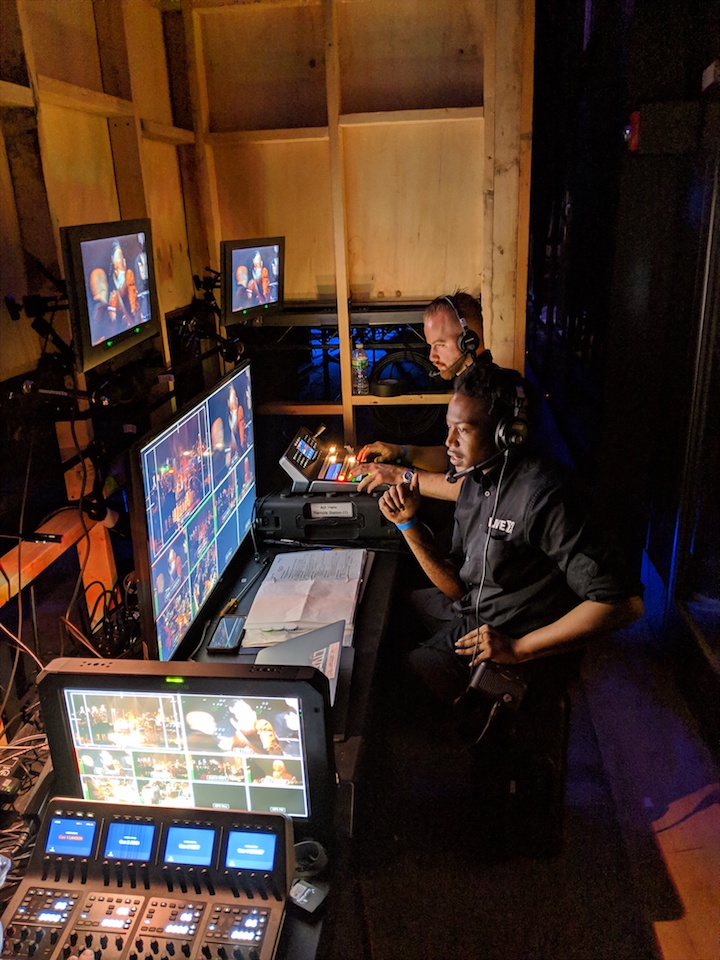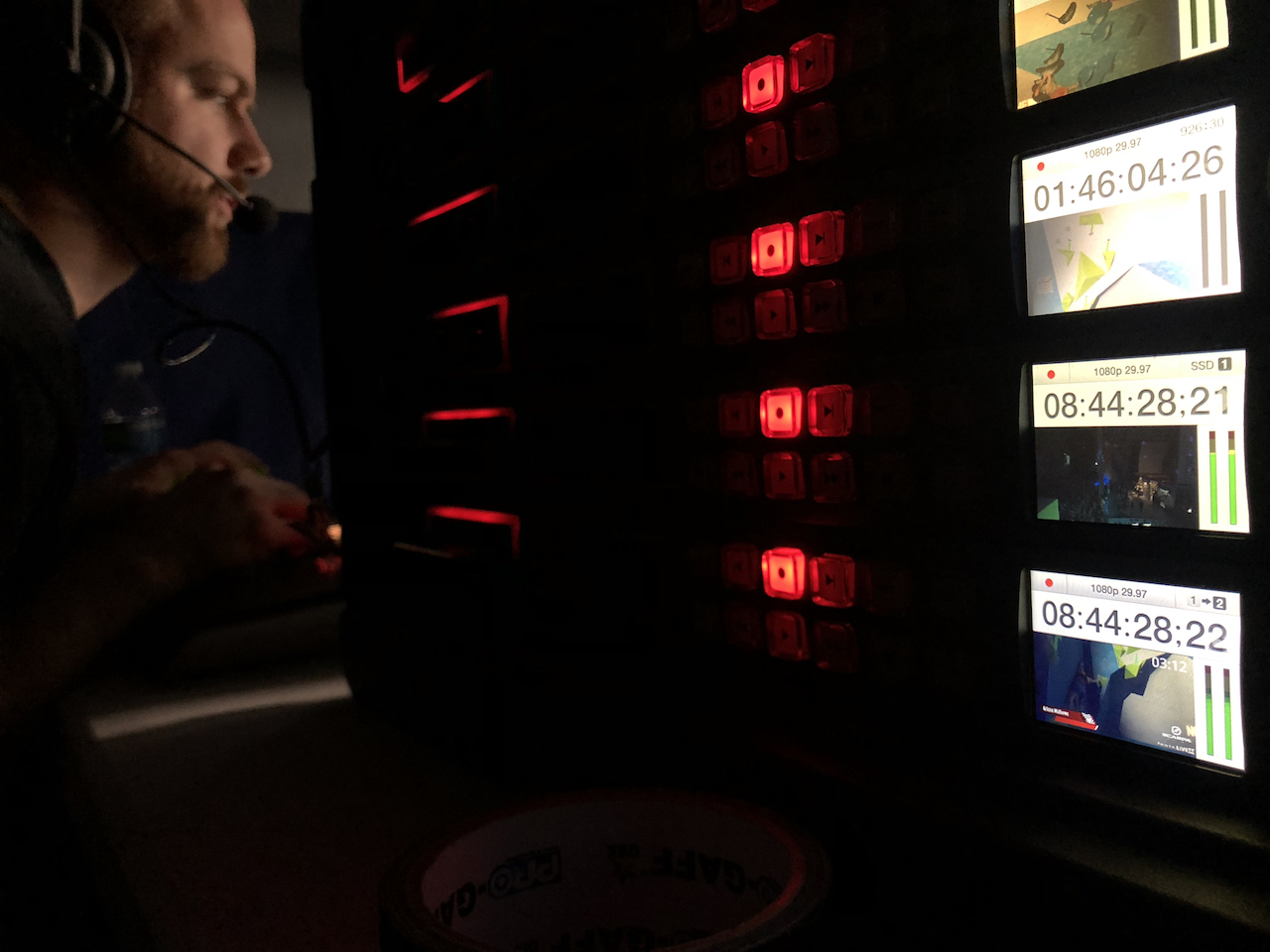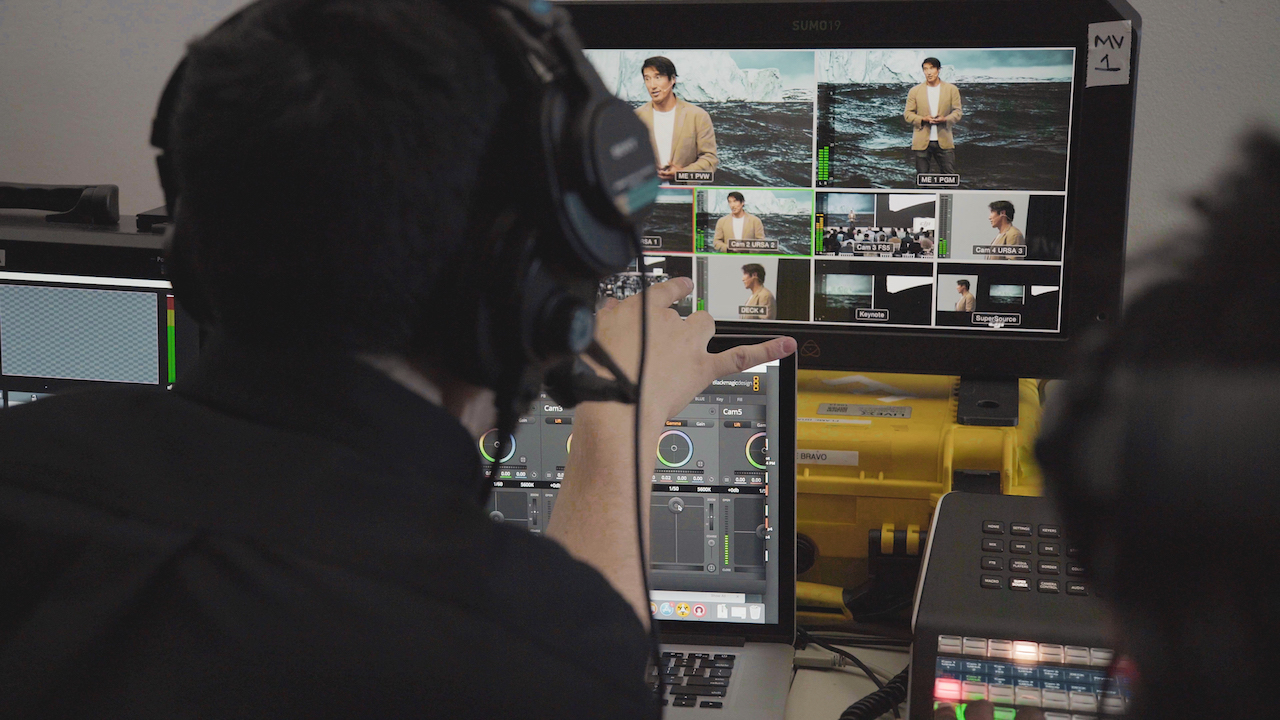Most of what we do in the pro AV industry today rests in that first word of the name: professional. In 2019, anyone with a smartphone can shoot HD footage, hold a videoconference with people around the world, and stream any kind of music they want, instantly. As a pro, you’re tasked with taking these kinds of ubiquitous experiences up a notch, with better equipment and production values.
There’s perhaps no better example of such a direct upgrade than what pro AV can bring to livestreaming. With a little know-how and a modest budget, you can take a practice that millions of people engage in—like streaming to Facebook from a smartphone—and turn it into a production worthy of broadcast TV. And if you’re not doing it yet, chances are you’ll be asked to do it soon.
“We’re seeing more and more live content, whether its livestreaming or OTT,” said Aubrey Russell, head of production at Live X, a New York City-based full service production and broadcast company, focused on live production, live streaming, and video production services. “Streaming is definitely where the industry is going and so people are starting to take it more seriously now.”
And to be taken seriously, you’ll need more than just a fancy camera.
The Right Play
The technical aspects of the production should be the last thing on your mind when starting to plan a livestream. In fact, being such a popular medium, there’s the distinct possibility that the person requesting it hasn’t considered whether it’s actually necessary or appropriate for the situation. So, it’s important that you ask some questions out of the gate.
“The buzzword comes up, so we have a conversation with our clients, ‘OK, this is what livestreaming actually is. Are you sure this is what you want?’” said Joseph LeConte, audiovisual coordinator at Texas Christian University (TCU). “And most of the time the answer is actually, ‘No, that’s not what we want at all. We don’t want to go through the trouble of doing it properly, so we’re not going to do it.’”
LeConte stresses another crucial question to ask in the preliminary phase: whether your talent is okay with being livestreamed. “Sometimes the answer comes back ‘Oh, we didn’t even think to ask that,’” he said. “Then it becomes about talent releases and things like that. We make sure they know that’s on them, that they cover their bases, because we don’t want anybody to get in trouble.”
Russell and Live X also take a methodical approach to initiating the plans. “The biggest question that we’ll ask first is where you’re wanting to stream and why you’re wanting to stream,” she said. “Who’s your audience? Do you want to go on Facebook, do you want to go on YouTube? Where does your audience live?”
Know Your Audience
Answering that last question is perhaps the most crucial step in the equation. “Your livestream is only as good as your promotion of it,” LeConte said. “You can spend all the money in the world creating and producing this high-quality event, with all kinds of wonderful cameras, and sound, and great lighting, but if nobody knows you’re livestreaming it, then you’re kind of just making a recording.”
Simon Ball, senior vice president of product management, digital media solutions at West Digital Media Solutions, also puts paramount emphasis on the audience. His company, which produces more than 40,000 webcasts per year, starts out by having clients consider similar questions. “Streaming is one step of the equation, and you need to think of the whole workflow,” Ball said. “What’s my message, what am I trying to achieve with my message, and what’s my audience?
“If it’s an audience that’s middle aged and not very social media savvy, then probably the best way of getting to them is to send them an email, send them an invite. If it’s a younger audience, you may want to tweet it. Make sure you get into the right channels.”
Both Russell and Ball advise clients to capitalize on one of the advantages livestreaming over other kinds of broadcasts: the ability to cast a wide net. “A lot of times we’re pushing people to be on every platform now, so we’ll say we want to stream to all of your social media sites, whether that’s a [typical social platform] or whether that’s a white-label player that’s embedded on their website,” Russell said.

“We syndicate to multiple different outlets,” Ball said. “We can connect to OTT, we can connect to Facebook Live, we can connect to Twitter Periscope… But most importantly, do them all at the same time. If you want to get to an audience, that’s an important part of the equation.”
In the Moment
With a handle on acquiring viewers, it’s time to revisit the question of why you’re going live in the first place. “The whole point of live streaming is to bring the audience in,” LeConte said. “So if you’re going to do a live stream, understand the benefits that something like that gives you: you have the ability to have audience interaction. Are you planning on having somebody monitor the social media aspect of it? Are you going to have somebody in that monitoring role who really understands the social media platform that you’re presenting the live stream on?”
“Taking advantage of the fact that your video is live is very important,” Russell said. “What’s something you can do live that you couldn’t take advantage of if you were uploading a video? How you’re interacting with your audience is key, and that’s what brings live to life.”
Russell said that Live X uses a Facebook application that allows their team to bring in audience questions and comments into a spreadsheet. They can then aggregate them for the sake of polling. “We’ll use that often and then make graphics that reflect that onscreen,” she said. “We had a show for a football brand that had graphics onscreen with a field and two helmets, and depending on who you thought would win, the helmets would go to one side of the field or the other. It made people want to stay engaged longer because they wanted to see who would win the poll at the end.”
Making it Happen
Obviously, the ideal scenario is to have a professional production environment, or to bring in a team like West or Live X to handle your livestream. But you can still produce an engaging and successful livestream on your own without emptying the bank.

LeConte and TCU use Livestream Studio, a free software package from Livestream.com, that enables his team to hook up any kind of camera, run graphics and video content, and pull in live video. “We’re using an HD51 from Livestream, built by Blackmagic Design,” he said. “For audio, we have a hodgepodge system built on a Yamaha mixer, where we mix all the audio down for the space, then we run a parallel out to a Focusrite Scarlett 2i2 XLR-to-USB interface and import the audio into Livestream Studio using that.
“[This kind of system] can be implemented easily, but again, there’s boxes that need to be checked, and things that need to be put together prior to spending the money. And once you spend the money, making sure that you have the appropriate staff to run it and the appropriate space to utilize it.”
Challenges
According to Russell, a successful livestream hinges on having enough bandwidth to stream to multiple platforms. “The difficulty is making sure you’re able to push a solid stream out individually to each place,” she said. “We use different encoders for different platforms, because they have different relationships with platforms.” For example, the Wowza ClearCaster is the preferred encoder for Facebook Live, so they have four of these devices ready to deploy in the field.
“A lot of times we’ll have multiple encoders onsite, which then means we obviously need a certain amount of bandwidth for each stream,” Russell said. “Ideally, you should have a hardline internet feed, and if you don’t have a hardline, having a solid bonded service [is crucial].”
Parting Wisdom
What’s the key to maintaining a handle on livestreaming? “Always be adapting,” Russell said. “Streaming is changing all the time; social media platforms are changing their API constantly. There’s always updates with gear, there’s always new enhancements, so you always have to be adapting to what the environment wants in the moment, because streaming is the Wild West still in that way.”
Russell recommends being active in forums, like vMix’s and Blackmagic Design’s, following certain brands on Twitter, and participating in Reddit threads and Facebook groups. These communities will help you navigate the ever-changing nature of the category. “I think that’s what the exciting thing about streaming is, it’s unpredictable,” she said. “It’s just been here for a long time and people are finally catching up to it, and now it’s not going anywhere.”

